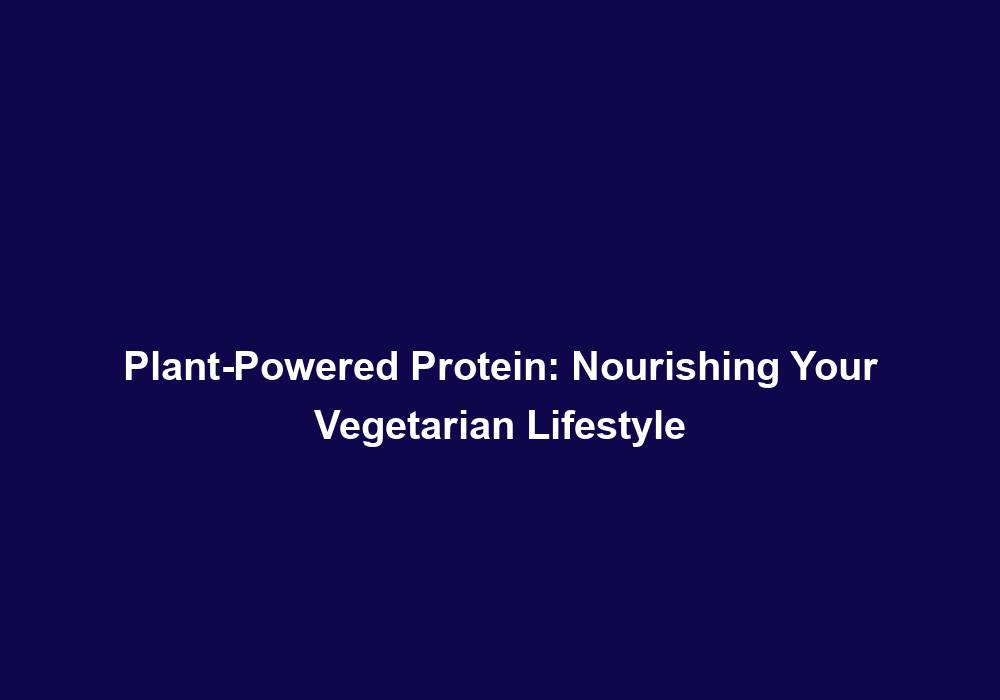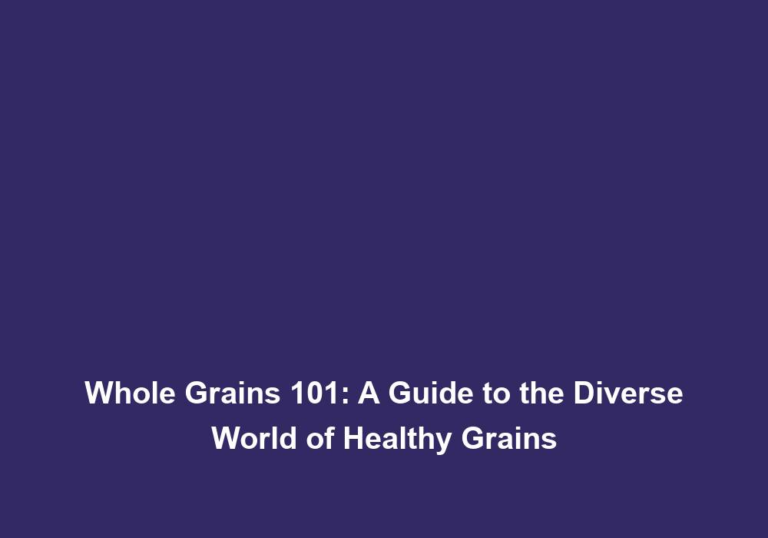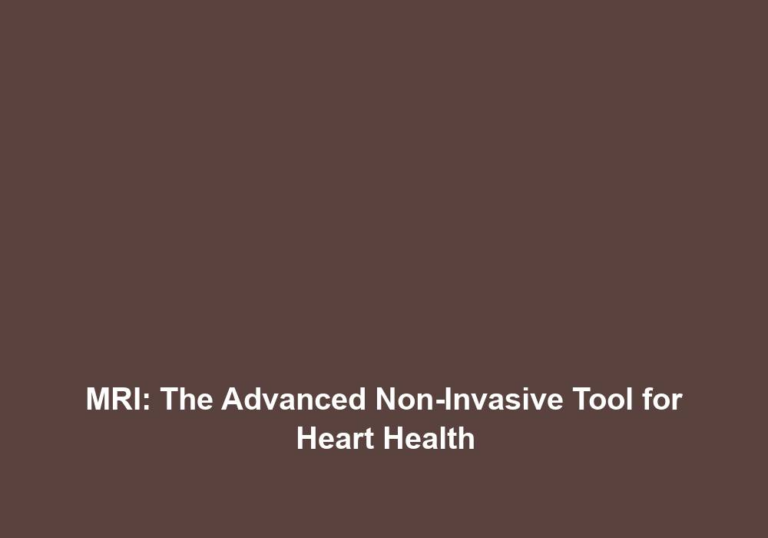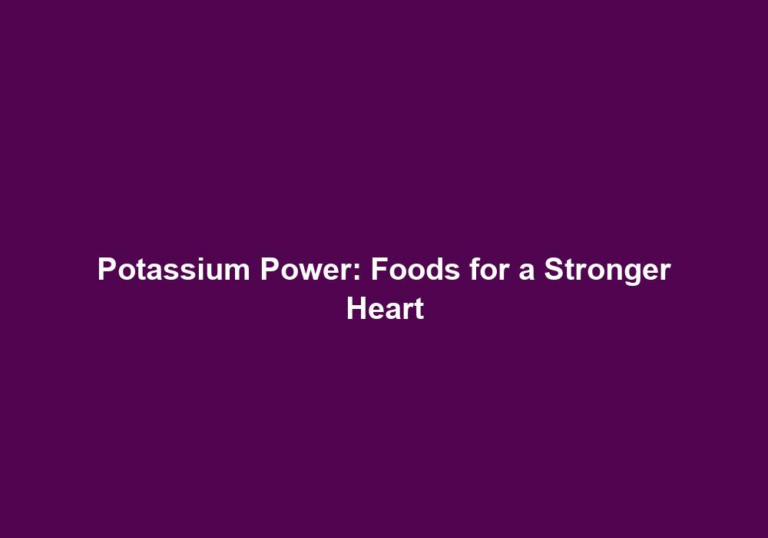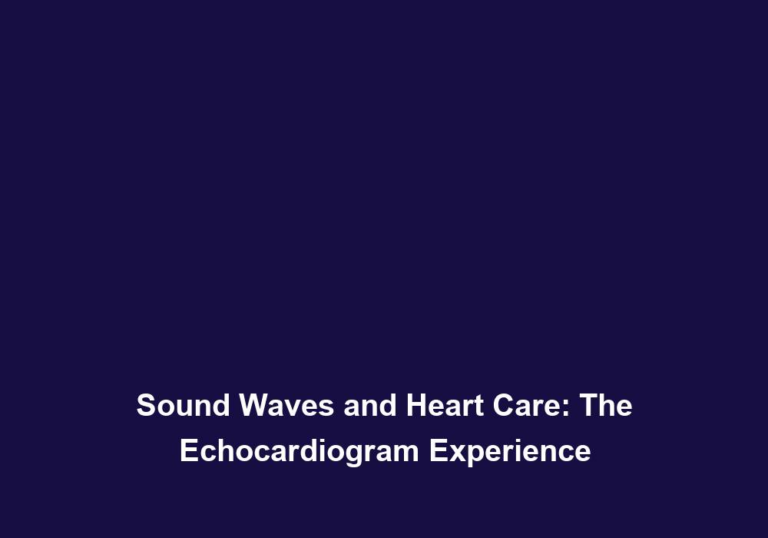Plant-Powered Protein: Nourishing Your Vegetarian Lifestyle
In recent years, more and more individuals have chosen to adopt vegetarian or vegan lifestyles due to various reasons such as ethical concerns, environmental impact, or health benefits. However, one common concern among vegetarians is ensuring an adequate intake of protein, which is an essential macronutrient involved in numerous bodily functions, including muscle building, tissue repair, and hormone production. Fortunately, there is a wide range of plant-powered protein sources available that can nourish and support a vegetarian lifestyle. In this article, we will explore the importance of plant-based protein and provide a comprehensive guide to incorporating these protein sources into your diet effectively.
Why is Protein Important?
Protein is often referred to as the building blocks of life, and for good reason. It is responsible for the repair and growth of tissues, the production of enzymes and hormones, and plays a crucial role in maintaining a healthy immune system. Protein is made up of amino acids, which are essentially the building blocks of protein molecules. Our bodies require a variety of amino acids to function optimally, some of which can be produced by the body itself, while others need to be obtained from the food we consume. These are known as essential amino acids, and they are found in abundance in animal products. However, with careful planning and a diverse plant-based diet, vegetarians can also meet their protein requirements without compromising their health.
Importance of Essential Amino Acids
Essential amino acids are the amino acids that our bodies cannot produce on their own and must be obtained from external sources like food. Animal products, such as meat, poultry, and dairy, are considered complete protein sources as they contain all the essential amino acids in adequate amounts. However, for vegetarians who exclude animal products from their diet, it is important to consume a variety of plant-based protein sources to ensure a complete amino acid profile. By incorporating a diverse range of plant proteins into your diet, you can easily obtain all the essential amino acids necessary for optimal health and functioning of the body.
Benefits of Plant-Based Protein
In addition to providing essential amino acids, plant-based proteins offer numerous health benefits. Here are some key advantages of incorporating plant-powered protein into your vegetarian lifestyle:
-
Fiber Content: Plant-based protein sources, such as legumes, quinoa, nuts, and seeds, are rich in dietary fiber. Fiber plays a crucial role in maintaining digestive health, promoting regular bowel movements, and reducing the risk of chronic diseases like heart disease and type 2 diabetes. Including fiber-rich plant proteins in your diet can help support a healthy digestive system.
-
Vitamins and Minerals: Plant-based protein sources are often packed with essential vitamins and minerals. Legumes, for example, are not only a great source of protein but also provide important nutrients like iron, folate, and potassium. Nuts and seeds are rich in vitamin E, magnesium, and healthy fats. By incorporating a variety of plant proteins into your meals, you can ensure a well-rounded intake of essential nutrients.
-
Reduced Saturated Fat: Plant-based proteins are generally lower in saturated fat compared to animal-based proteins. High intake of saturated fat has been linked to an increased risk of heart disease. By choosing plant-powered proteins, you can lower your saturated fat intake and support heart health.
Top Plant-Based Protein Sources
-
Legumes: Legumes are an excellent source of plant-based protein. They include various types of beans such as black beans, kidney beans, and chickpeas, as well as lentils and peas. Legumes are not only rich in protein but also provide a good amount of fiber, vitamins, and minerals. Adding legumes to your diet can help you meet your protein needs while promoting digestive health and providing essential nutrients.
-
Quinoa: Quinoa is a complete protein source, meaning it contains all nine essential amino acids. This makes it an ideal choice for vegetarians looking to diversify their protein intake. Quinoa is also high in fiber and rich in important minerals like iron and magnesium. It can be prepared in a variety of ways and makes a nutritious addition to salads, stir-fries, or even as a stand-alone dish.
-
Nuts and Seeds: Nuts and seeds are not only a great source of healthy fats but also provide a decent amount of protein. Almonds, walnuts, chia seeds, flaxseeds, and hemp seeds are some examples of protein-rich options in this category. They can be enjoyed as a snack, added to smoothies, or used in baking for an extra protein boost.
-
Soy Products: Soy products such as tofu, tempeh, and edamame are fantastic sources of plant-based protein. They are versatile ingredients that can be used in a variety of dishes, from stir-fries to salads. Soy products also contain other important nutrients like calcium and iron, making them a valuable addition to a vegetarian diet.
-
Seitan: Seitan, also known as wheat meat or wheat gluten, is a high-protein meat substitute made from gluten. It has a meaty texture and is often used in vegetarian and vegan dishes as a protein alternative. Seitan can be marinated, grilled, and used in stir-fries or stews to add a substantial amount of protein to your meals.
Incorporating Protein-Rich Plant Foods
To ensure a well-rounded intake of plant-based protein, it is important to incorporate a variety of protein-rich foods into your diet. Here are some tips for effectively incorporating plant-based protein into your meals:
-
Meal Planning: Planning your meals in advance can help ensure that you are meeting your protein needs. Include a variety of plant-based protein sources in your weekly meal plan to ensure a diverse intake of essential amino acids. For example, you can plan to have a lentil curry with quinoa for dinner, a tofu and vegetable stir-fry for lunch, and a chia seed pudding with almond butter for breakfast.
-
Combining Complementary Proteins: While it is not necessary to combine proteins at every meal, consuming a variety of protein sources throughout the day can help ensure that you are getting all the essential amino acids. For example, combining legumes with whole grains or nuts/seeds can provide a complete amino acid profile. Pairing brown rice with black beans or hummus with whole wheat pita bread are great examples of complementary protein combinations.
-
Experiment with Recipes: Don’t be afraid to try new recipes and experiment with different flavors and plant-based protein sources. There are countless vegetarian recipes available online that can help you discover new and exciting ways to incorporate plant-based protein into your diet. From quinoa salads with roasted vegetables to almond-crusted tofu, the options are endless.
-
Consider Protein Supplements: If you are finding it challenging to meet your protein needs solely through diet, protein supplements can be a convenient option. There are various plant-based protein powders available, such as pea protein or hemp protein, which can be added to smoothies or used in baking. However, it is important to remember that whole foods should always be the foundation of a healthy diet, and supplements should be used as a supplement, not a replacement.
Conclusion
Transitioning to a vegetarian lifestyle does not mean compromising on protein intake. By incorporating a variety of plant-based protein sources into your diet and planning your meals wisely, you can easily meet your protein needs and nourish your vegetarian lifestyle. Legumes, quinoa, nuts and seeds, soy products, and seitan are just a few examples of the many nutritious options available. Remember to experiment with recipes, combine complementary proteins, and consider protein supplements if needed. With dedication and a well-rounded approach to nutrition, you can thrive on a plant-powered protein diet while enjoying the numerous benefits it offers to your health and well-being.

